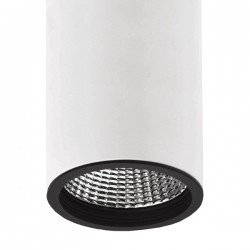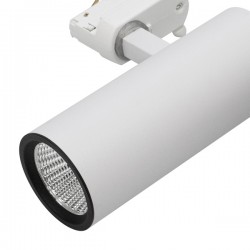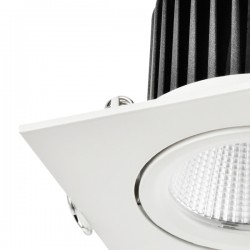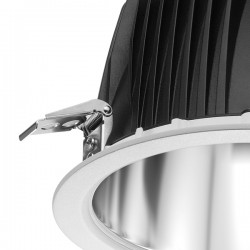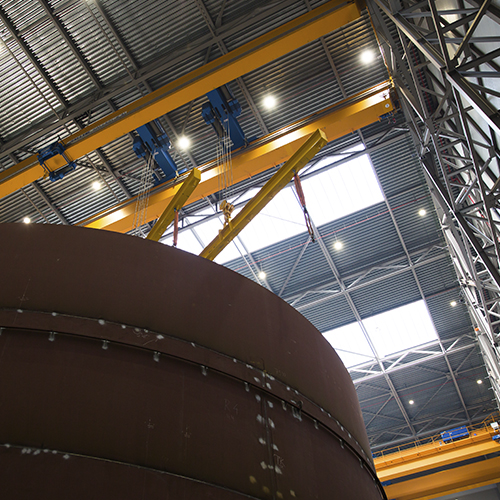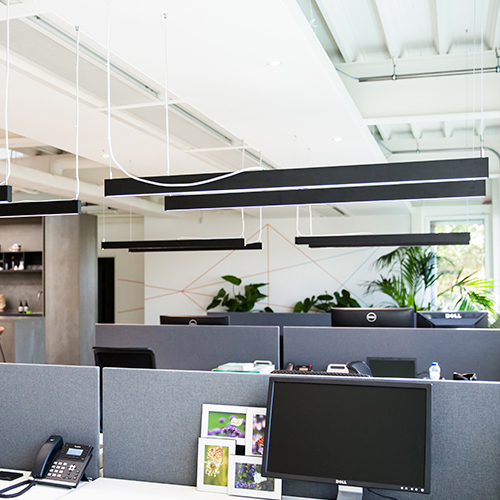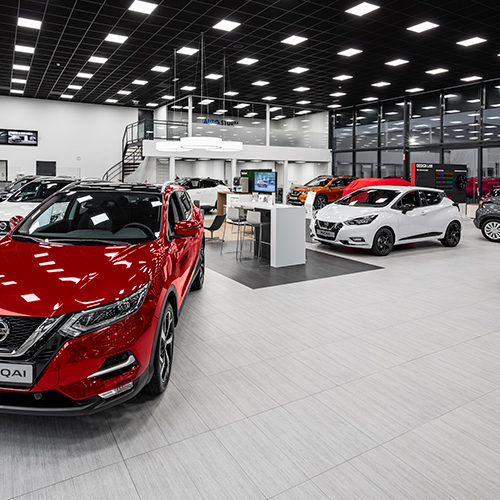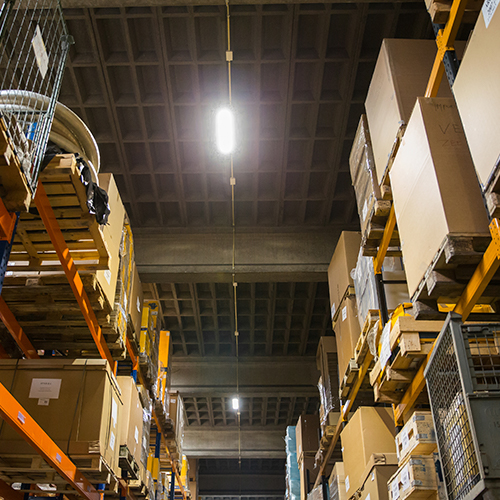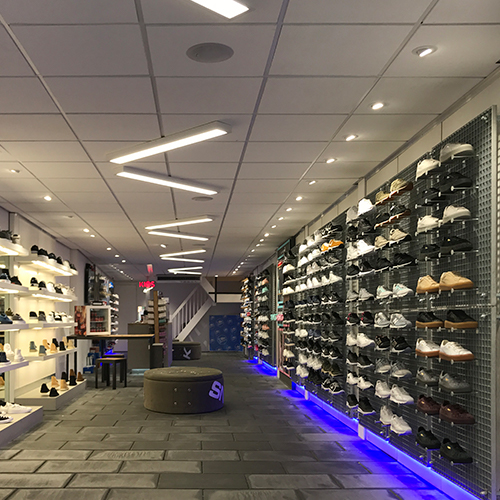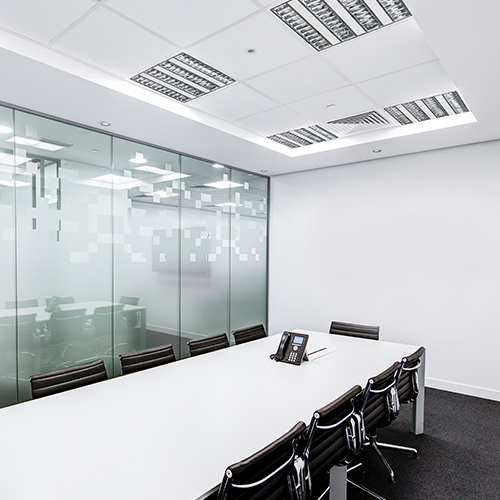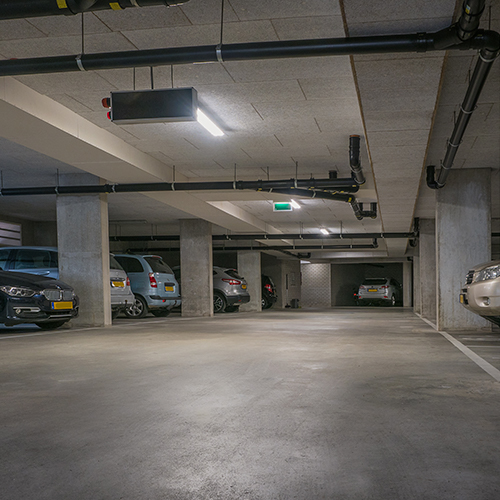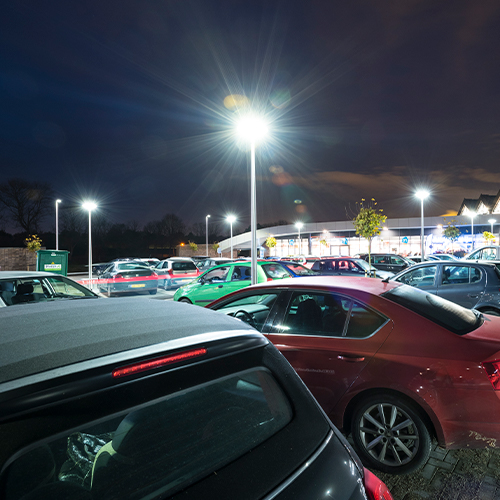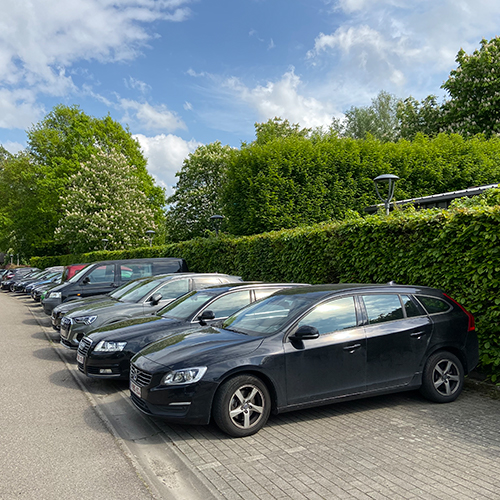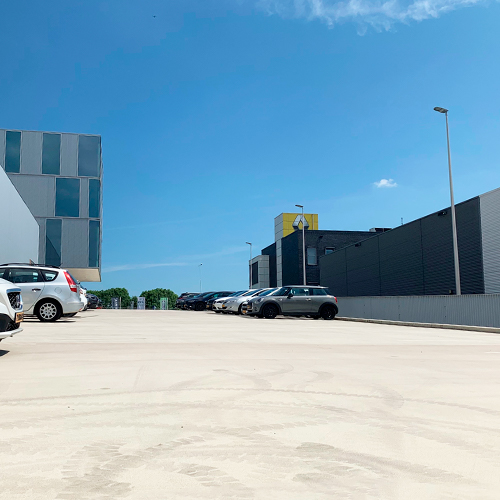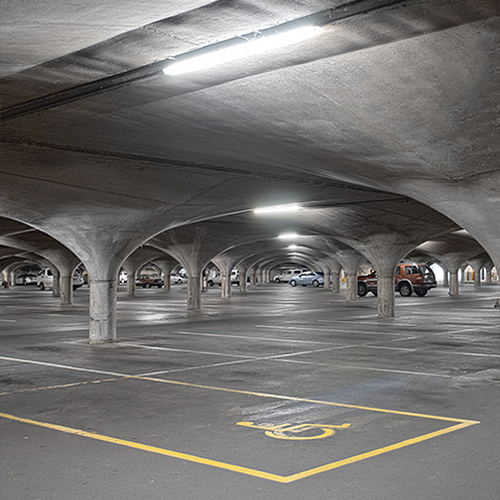LED school lighting
In an educational environment, good lighting is essential for the well-being and concentration of students. The right school lighting can provide significant benefits for both students and teachers, leading to an improved learning experience. Choosing LED school lighting comes with a number of benefits, such as significant cost savings and a longer lifespan. This not only means you have to replace lamps less often, but you also save on maintenance costs. The reduced energy consumption results in lower electricity bills, which provides significant financial benefits in the long term.
Advantages of LED lighting at school
In addition to the costs you save on energy and maintenance, LED school lighting also has specific advantages:
- LED lighting improves visual comfort in classrooms through lower UGR values, resulting in less glare and a more pleasant environment for students and teachers. Save even more energy through intelligent lighting management.
- The right LED lighting improves concentration, allowing students to focus better and teachers to teach more effectively.
- LED lighting is energy efficient, providing significant savings on the school's energy bill for other educational purposes. Increase productivity and concentration.
- LED lighting provides an even distribution of light sources, minimizes shadows and glare and contributes to a comfortable and optimal learning environment.
Additionally, if you are interested in investing in LED lighting for your school office spaces, check out our workplace lighting page . In addition, LED strips can be a versatile option to provide different rooms in your school with the right lighting. When considering which LED fixtures will best suit your school, you can view our extensive selection by indoor lighting . Here you will find detailed information about the options available so you can make informed decisions that will transform your school.

Replace existing school lighting with LED lighting
Replacing school lighting yourself can be a challenging task and it is important to consider several factors. Consider the correct positioning of fixtures, the ideal light intensity for specific rooms and the choice of the right color temperature. That's why it can be helpful to enlist the expertise of professionals who can help you develop a thoughtful lighting plan that's perfectly tailored to the unique needs of your school environment.
A professional lighting plan ensures that your school environment not only meets the best lighting standards, but also that the lighting contributes maximally to the well-being and performance of students and teachers. With a detailed analysis of current lighting, your school's needs, and the optimal placement of LED fixtures, you won't have to struggle with the technical aspects, and you will not only save on energy and maintenance costs, but also have a positive influence the learning environment in your school. This means that you can invest not only in energy, but also in the future of your students.
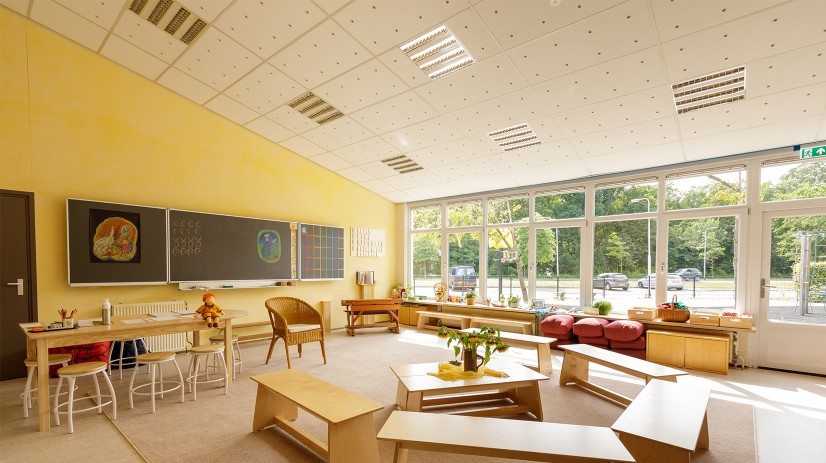
FIRST DUTCH INNOVATIONS | DELFT
In schools, children are prepared for the future. Unfortunately, the school buildings where lessons are taught are often older and do not always keep up with the times. Kernbouw BV therefore makes maintenance and sustainability plans for various schools. With solar panels and LED lighting, among other things, they not only manage to reduce energy consumption to 0, they also provide an optimal working and learning place for students, with good lighting.
The benefits of Prolumia
At Prolumia you enjoy a strong reputation when it comes to LED school lighting, and here's why:
Well-thought-out functionality
Our LED school lighting is not just a light source; it is a thoughtfully designed solution that optimizes the functionality of your school spaces. We understand that every school has unique requirements. Whether classrooms, corridors, common areas or special rooms, we tailor our lighting solutions to meet your specific needs. We think about the right light intensity, color temperature and light distribution to achieve the desired atmosphere and performance. With Prolumia you are assured of school lighting that does what it is supposed to do.
Affordable quality
While we strive for the highest quality in all our products and services, we also understand that budgets play a crucial role in educational institutions. At Prolumia we want you to not have to make any compromises between quality and costs. Our LED school lighting is affordable quality. This means you can enjoy the benefits of high-quality LED lighting without breaking your budget.
Quickly available from stock
Our extensive stock enables us to deliver quickly, even for the most urgent school projects. We understand the importance of on-time delivery, and we strive to ensure your school project runs smoothly. Whether you are ready to start a new school project or want to upgrade your existing lighting, at Prolumia you can count on fast delivery of high-quality LED school lighting.
More concentration with LED school lighting
The UGR value stands for Unified Glare Rating , or the degree of glare that a light source causes in a certain environment. The UGR value therefore indicates how dazzling or disruptive the light in a room can be. But why is this relevant for school lighting and concentration? The answer lies in our biology. A high UGR value, which means that there is a lot of glare, can cause fatigue and discomfort. This then leads to distraction, reduced attention or even headaches for students and teachers. A lower UGR value therefore ensures a comfortable and productive learning environment, because it minimizes distraction from light and thus promotes better concentration, which can ultimately only benefit learning performance.

Which type of lighting for which room?
In addition to the fact that the transition to LED lighting ensures energy savings, it also offers a wide range of options to optimize the school environment. LED fixtures are available in different shapes and sizes, including recessed spotlights, wall fixtures, ceiling fixtures, strips, panels and more. This makes it possible to precisely tailor lighting to the specific needs of each room in your school, from classrooms to corridors and communal areas.
- Classrooms
In classrooms, learning and concentration are central. For these areas, lighting with a low UGR value is essential to minimize glare and maximize visual comfort. Recessed spotlights, ceiling fixtures or panels are excellent choices to distribute even light and minimize shadows.
- Corridors
Corridors are of course often used as connecting routes between different rooms, so they must be well lit to ensure safety. LED strips can be an excellent option here. They provide uniform lighting along the entire corridor and can be installed on walls or ceilings. Choose a color temperature around 4000K for a bright and inviting hallway. - Common areas
In common areas, such as the auditorium, library and canteens, a flexible approach to lighting is often required. Wall fixtures can provide an inviting and comfortable atmosphere, while ceiling panels or fixtures can be used for general lighting. Also consider dimmable LED lamps to adapt the lighting to different activities and atmospheres. - Special classrooms
Some classrooms have specific lighting needs. For example, laboratories require bright, white lighting to enable accurate work. Mood lighting can be important for art or music rooms. - Outdoor areas
Lighting in outdoor areas such as parking lots and sports fields plays a role in the safety and security of the school. LED lighting provides brightness and efficiency, and motion sensors allow you to save energy when lighting is not needed.
Suitable color temperatures for school lighting
Color temperatures for LED school lighting influence the learning environment and student and teacher performance, so it is critical to understand how these color tones influence.
The color temperature of LED lighting is measured in Kelvin (K). For schools and other educational institutions, we usually recommend color temperatures between 4000K and 5000K. This falls within the neutral white light spectrum and provides a bright, vibrant appearance that is ideal for learning environments. These color temperatures mimic natural daylight, which promotes the alertness and concentration of students and teachers. It ensures that texts and learning material are clearly visible without glare or unnecessary eye strain. Moreover, it provides a pleasant and pleasant atmosphere in the classrooms, which further enhances the learning process.
Finally, the color temperature is also important in specific situations. During long school days, it is important to have the right color temperature to reduce fatigue and maintain alertness. Neutral white light helps students stay awake and focused. In the dark winter months, LED school lighting with a higher color temperature can help prevent gloom, because the bright light mimics the effects of natural daylight. During the summer months, when more daylight is available, the right color temperature can help maintain the atmosphere in the classroom. This prevents the light from feeling too warm or too cold.
To assess the quality of LED lighting, it is essential to look at the color rendering index (CRI) or the Ra value. This rating, measured on a scale of 0 to 100, indicates how accurately a light source reproduces the colors of objects compared to natural sunlight. For schools and educational institutions, we recommend LED lighting with a high CRI value (above 80), as this ensures that colors are displayed vividly and faithfully, especially during lessons where this may be important, such as art and science.
Frequently asked questions about school lighting
Is there currently a subsidy for LED lighting for schools?
There are currently no national subsidies available to make schools more sustainable with LED lighting. However, it is important to mention that there are opportunities to help schools make their lighting systems more sustainable through regional and local initiatives and financing. The types of grants and programs available vary considerably depending on where you live and the specific conditions set by the relevant agencies.
Does school lighting improve student concentration?
Good lighting ensures that students get tired less quickly and can concentrate better on their work. It also helps prevent eye problems such as headaches, eyestrain and blurred vision. Daylight is the best form of lighting because it is natural and healthy. When daylight is not possible, artificial light can be used. Artificial light must meet the requirements for good lighting, such as sufficient light intensity, the correct color temperature and good contrast. It is not only important that the lighting in the classroom is good, but also that the lighting in other rooms at school, such as the library and the computer room, is good. Students must also be able to see clearly and concentrate in these areas.
How much light does a classroom need?
The amount of light a classroom needs can vary depending on several factors, including the size of the room, the type of activities taking place and the age of the students. In general, it is recommended to have a lighting level between 300 and 500 lux for standard classrooms.

